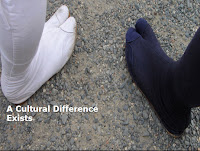Here is a new recording of a speech I gave at the Jamaica Customer Service Association Conference.
Francis’ Recordings
Speeches, recordings, podcasts completed in the course of doing business in Framework Consulting
Enjoy! — Francis Wade

Chronicles from a Caribbean Cubicle
New Thinking from Framework Consulting
The outputs from the HRMATT conference from my speech on “The Trinidadian Executive in Jamaica” can be received by sending email to hrmatt2007@aweber.com.
Both the PowerPoint presentation and the audio from the speech can be accessed through the email.
Instructions:
1. Send email to hrmatt2007@aweber.com and wait a few minutes
2. Follow the instructions and click on the confirmation email
3. The email with the information should be received within a few minutes

 I had the privilege of appearing on Tuesday (Oct 9th) on a Trinidadian television programme as one of the speaker’s at the recently concluded HRMATT conference.
I had the privilege of appearing on Tuesday (Oct 9th) on a Trinidadian television programme as one of the speaker’s at the recently concluded HRMATT conference.It was a lot of fun, and there was a lot of playful conversation between the two hosts, Jessie Ventour and Fazeer Muhammed.
I, like many West Indians, remember the voice of Fazeer Muhammed from region-wide cricket coverage. His voice is quite recognizable, and so very easy to listen to.
Jessie, for her part, is an ultra-capable radio/TV jockey who controls everything happening in the studio with what looks to me to be the latest equipment. She is the radio show host and the control room at the same time, which is something I was not prepared for — I was thinking of studios from the past (apparently the distant past.)
In a few days, I’ll be finished fixing up the sound on the recording and will load the entire interview up on my website.
 In an earlier post, I wrote about the new ways to use PowerPoint slides, emphasizing pictures rather than words.
In an earlier post, I wrote about the new ways to use PowerPoint slides, emphasizing pictures rather than words.
I have some examples of how my slides have evolved over time from being full of bullet points, to being driven by emotional images that help the audience to focus on the words I am saying, rather than those on the screen.
I have found a book that goes even further and provides a template and a way of thinking about presentations that is just excellent.
In the book Beyond Bullet Points, the author, Cliff Atkinson, makes the point that a good presentation is like a movie script, and the different scenes that are shot in the making of a film.
He has done an excellent job of reducing a movie to its elements, and applying the elements to a different purpose.
Movies have a basic structure, he argues. They begin with a particular background setting, against which a protagonist (usually the star or main figure) is going along in their life until some tragedy strikes that must be resolved.
The movie is about the steps taken to resolve the crisis, and at the end there is some kind of wrap-up to bring things to completion.
(Of course, there are amazing films made as a departure from the basic structure, but most departures are amazingly awful.)
A presentation or speech is no different, and the template he provides to structure a speech in 3 acts like a movie or play is a real breakthrough in thinking. He also advocates using PowerPoint slides as pictures with a minimum of words to build emotions at different points of the presentation.
I recommend it highly.
I write a lot about doing what one loves to do.
I am fortunate to say that I wake up each morning being able to say this, and apparently so does Steve Jobs:
Awhile ago I gave a presentation that seemed to be a good one. The crowd’s reaction was strong to the half-hour presentation, and a few people came up to find out more about our company and what it was doing in the region.
However, one woman went a bit further, and made a complaint. She said that the slides could be improved, and offered her help to make them better.
I was a bit taken aback. Although my PowerPoint presentation had been put together on the plane on the morning of the presentation, I thought that I had done a creditable job in putting some words together that would help people see what I was saying more clearly.
After all, most of the other people who spoke did not even have slides that were tailored to the conference material, so I considered myself a step above.
A year later, the presentation I gave is almost embarrassing to me, and I can never do such a presentation again.
Her comment moved me to be open to some new approaches, and when I can across a book by Jerry Weisman called ______________ and a blog called PresentationZen, I knew that it was time for a radical upgrade in the way I presented my materials.
Here is one of the slides from the presentation entitled “Using the Service Inventory to Create the Customer Experience” delivered in October of 2005.
Contrast that with a slide I presented at a recent speech I gave at a client’s internal meeting in November of 2006:
While I don’t intend to go into the different reasons for using a slide like this one in this blog entry, I can say that I have found that a slide like the one above touches an audience in very different ways, and at many levels.
The tendency of most speakers is to read from slides that are dense with information, and the content acts as a crutch for those who are insecure about getting lost in the presentation.
When the slide is used to make both an emotional point and a logical point, the impact is quite different, and the speaker interacts with the slide as an aide to the larger point that he/she is attempting to make, and to the intended result of the presentation.
Here is another example:

The point here is that slides are playing a different role in my presentations, and one that I think would be more interesting and emotionally compelling to the audience.
What a distance to come.
One caveat is that it no takes several hours of preparation to get the right combination of images and words to produce the intended result of the presentation. Finding the right image is no easy task, and it takes hours of looking at hundreds of pictures that do not fit the bill to find a handful that do. Sometimes, the search is fruitless and I have to resort to words. Often, the images are not Caribbean enough, as there are very few pictures reflecting the primarily African-Indo blend that we have in the English-speaking region.
Given that presentations are an important tool in the work I perform, making this shift has been gratifying, and hopefully my audiences have benefited from the change. Kudos to the unnamed and unknown woman who gave me a wake-up call a year ago.
 Starting today, in a short speech that I will be delivering to a monthly HRMAJ meeting, I will kick off an interactive, online series on the topic of networking in a Caribbean context. It will culminate in the final edition of the series on November 16th which is the final day of the 2006 HRMAJ conference.
Starting today, in a short speech that I will be delivering to a monthly HRMAJ meeting, I will kick off an interactive, online series on the topic of networking in a Caribbean context. It will culminate in the final edition of the series on November 16th which is the final day of the 2006 HRMAJ conference.
The arrival of the internet and computing technology has fundamentally changed the way in which networking is done, and the use of this blog as an interactive medium is one way in which I hope to introduce conference participants to my ideas on this topic.
Furthermore, it will present an opportunity to answer questions from those involved in the field on the topic, whether they plan to be at the conference or not.
For more information on the conference: see the HRMAJ website.